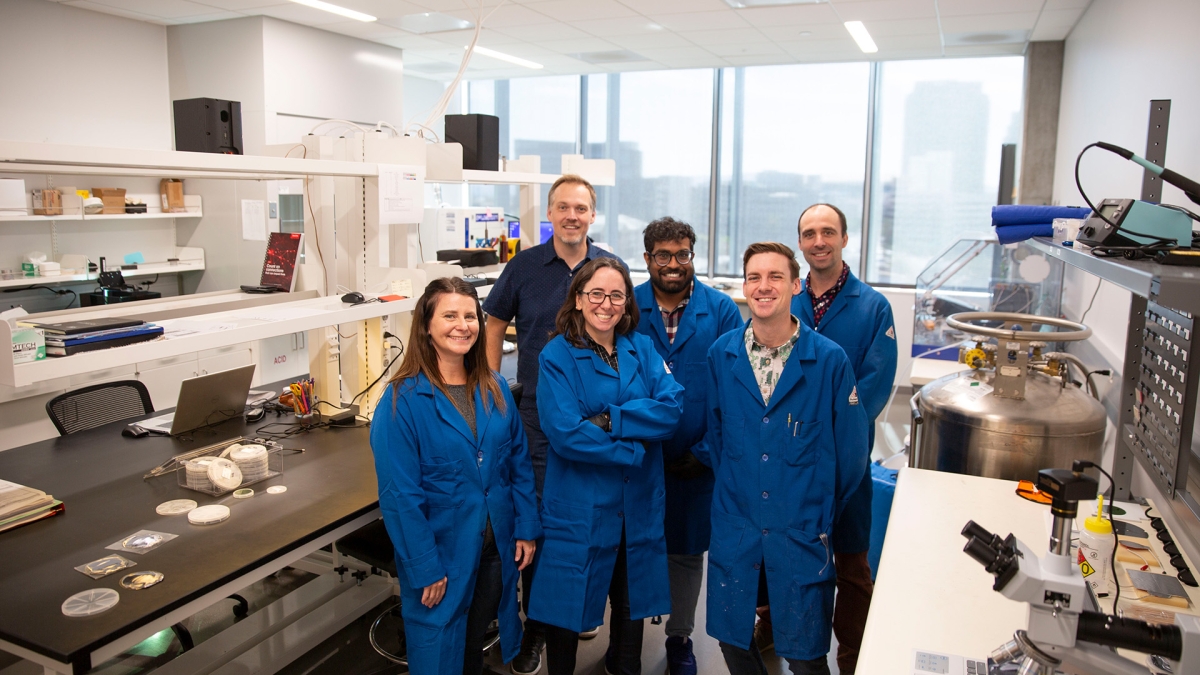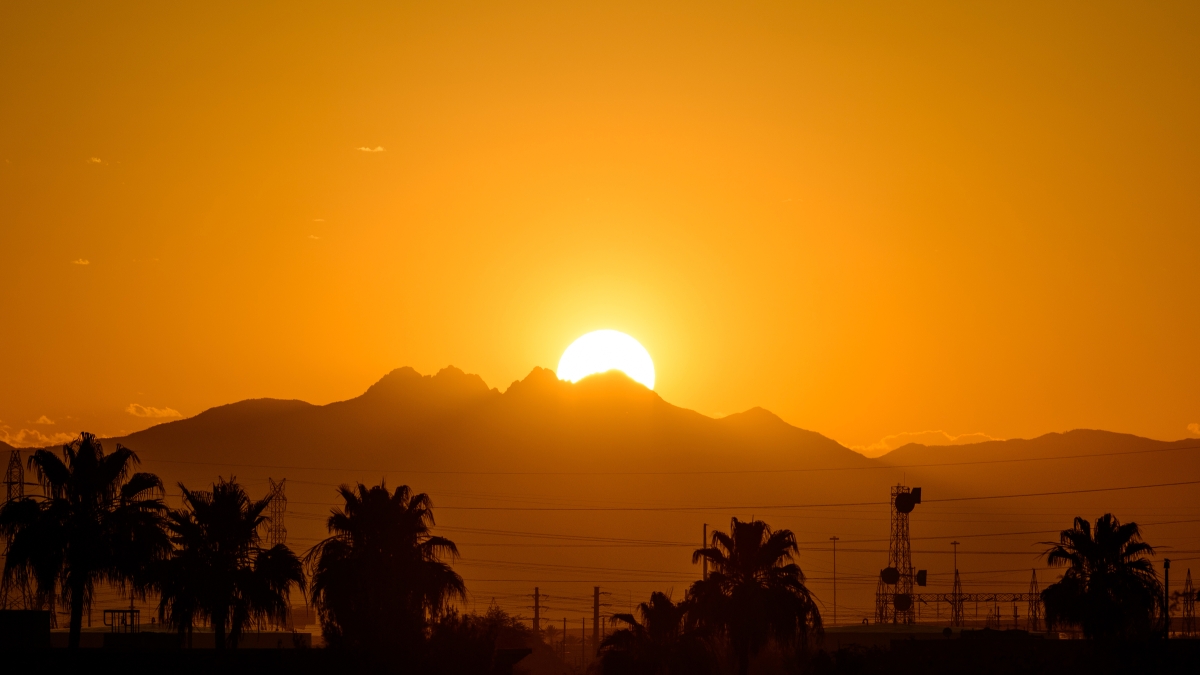Deserts are often thought of as barren places that are left exposed to the extremes of heat and cold and where not much is afoot. But that view is being altered as new research reveals the intricate ecological dynamics of deserts as they change in response to the elements.
New research from Arizona State University shows how microbes can significantly warm the desert surface by darkening it, much in the same way that dark clothes will make the wearer feel warmer in sunlight. These desert-darkening organisms make a living basking in the sun and form a mantle that covers the landscape.
Such mantles, called biological soil crusts or biocrusts, provide important ecosystem services, such as fighting erosion, preventing dust storms or fertilizing the ground with carbon and nitrogen.
The new ASU research shows how the biocrust microorganisms, in an effort to protect themselves from harmful ultraviolet rays in the strong desert sun, produce and lay down so much sunscreen as to noticeably darken the soil, changing the reflectivity of the desert surface as they spread across the land.

A biocrust turns a dark color (left) in the desert outside Chandler, Arizona. These crusts can raise the temperature of the desert floor by as much as 18 degrees Fahrenheit.
Photo by Ferran Garcia-Pichel/ASU
The research is outlined in the article “Bacteria increase arid-land soil surface temperature through the production of sunscreens,” published in the Jan. 20 online issue of Nature Communications. It was written by Estelle Couradeau, a Marie Curie postdoctoral fellow at Arizona State University, and Ferran Garcia-Pichel, an ASU professor and dean of natural sciences in the College of Liberal Arts and Sciences. It is part of a long-term institutional collaboration with Lawrence Berkeley National Laboratory, whose fellow scientists Trent Northen, Ulas Karaoz, Hsiaon Chiem Lin, Ulisses Nunes da Rocha and Eoin Brodie are co-authors of the paper.
“We have found that the presence of sunscreen-bearing crusts can actually raise local surface temperature by as much as 10 degrees Celsius (18 degrees Fahrenheit). Because globally they cover some 20 percent of Earth’s continents, biocrusts, their microbes and sunscreens must be important players in global heat budgets,” said Couradeau, the lead author of the paper. “We estimate that there must be some 15 million metric tons of this one microbial sunscreen compound, called scytonemin, warming desert soils worldwide.”
Couradeau spent the past three years studying biocrusts in the laboratory of Garcia-Pichel.
“An increase of 18 degrees Fahrenheit is not without consequence, and we can show that the darkening of the crust brings about important modifications in the soil microbiome, the community of microorganisms in the soil, allowing warm-loving types to do better,” Garcia-Pichel said.
“This warming effect is likely to speed up soil chemical and biological reactions, and can make a big difference between being frozen or not when it gets cold,” he explained. “On the other hand, it may put local organisms at increased risk when it is already quite hot.”
Couradeau and Garcia-Pichel said that although biocrusts have been overlooked in the past, they are now getting much closer scrutiny from scientists.
“Biocrusts, while cryptic, deserve more consideration from us,” Couradeau said. “We need to include them in our climate models and speak about them in the classroom.”
More Science and technology

ASU professor honored with prestigious award for being a cybersecurity trailblazer
At first, he thought it was a drill.On Sept. 11, 2001, Gail-Joon Ahn sat in a conference room in Fort Meade, Maryland. The cybersecurity researcher was part of a group that had been invited…

Training stellar students to secure semiconductors
In the wetlands of King’s Bay, Georgia, the sail of a nuclear-powered Trident II Submarine laden with sophisticated computer equipment juts out of the marshy waters. In a medical center, a cardiac…

ASU startup Crystal Sonic wins Natcast pitch competition
Crystal Sonic, an Arizona State University startup, won first place and $25,000 at the 2024 Natcast Startup Pitch Competition at the National Semiconductor Technology Center Symposium, or NSTC…
